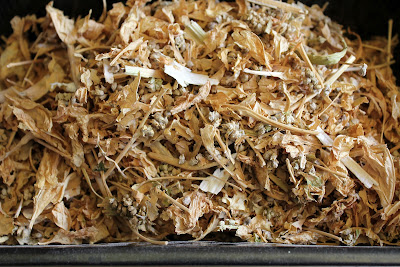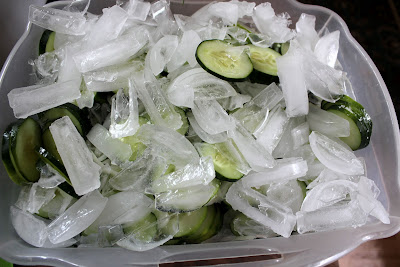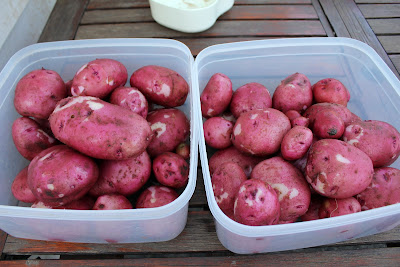This spring we had lots of fruit so I started thinning the peach and apple trees. You are to thin so the fruit doesn't touch when it is full grown. I thinned out a lot of fruit but didn't get all the trees finished. The tree below got missed. There were tons of fruit and they were quite a bit smaller than on the trees I thinned.
This tree was thinned - you can see most fruit are not touching each other.
We also have 2 yellow plum trees and the plums are just clumped together. I was told that you don't have to thin plums as they self-thin and drop excess fruit. WRONG! Look at these plums.
Anyway, back to the chutney. A friend asked me to make some chutney for her and upon doing some research, I found so many interesting recipes to choose from. I got this one from my cookbook 250 Home Preserving Favorites by Yvonne Tremblay. It looked tasty plus it used peaches and yellow plums.
Ingredients
4 c plums - chopped
3 c peaches - peeled and chopped
2 1/2 c sugar (the recipe asked for brown sugar but I read that the chutney would be a darker colour with it. I decided to go with white sugar to help keep the lovely colours of the fruit)
1 c diced yellow or red pepper (I used red for a contrasting colour)
1 c chopped onion
1 large clove garlic, minced
1 green or red hot chili pepper, minced or 1 tsp hot pepper flakes (I used red pepper flakes)
2/3 c vinegar
2 Tbsp grated ginger root
1 Tbsp grated lemon rind
2 tsp salt
1 tsp cinnamon
1 tsp ground cloves
1 tsp mustard seed
1/2 tsp ground coriander
1/2 tsp turmeric
Peel and chop peaches.
Chop and pit plums. Leave the peel on as it breaks down in cooking. It also adds pectin to aid with the thickening of the chutney.
Mince garlic, chop onion and dice pepper. Add to fruit in a large heavy-bottomed pot.
Grate lemon ring and ginger root. Add to rest.
Add sugar, spices and vinegar to rest of ingredients. Isn't it a lovely colour? Stir often while bringing to a boil. Reduce heat to a gentle boil. Stir often while mixture cooks and thickens. (about 45 - 60 minutes) Ladle into sterilized jars and process for 10 minutes in a hot water bath.
The recipe is for 5 half-pints but I got 3 pints and 2 half-pints. (I used a bit more fruit and didn't measure the pepper or onion) You are to store for at least a month so the flavours can meld. It turned out to be a lovely colour and had a yummy aroma while cooking. Enjoy! ;)



















































